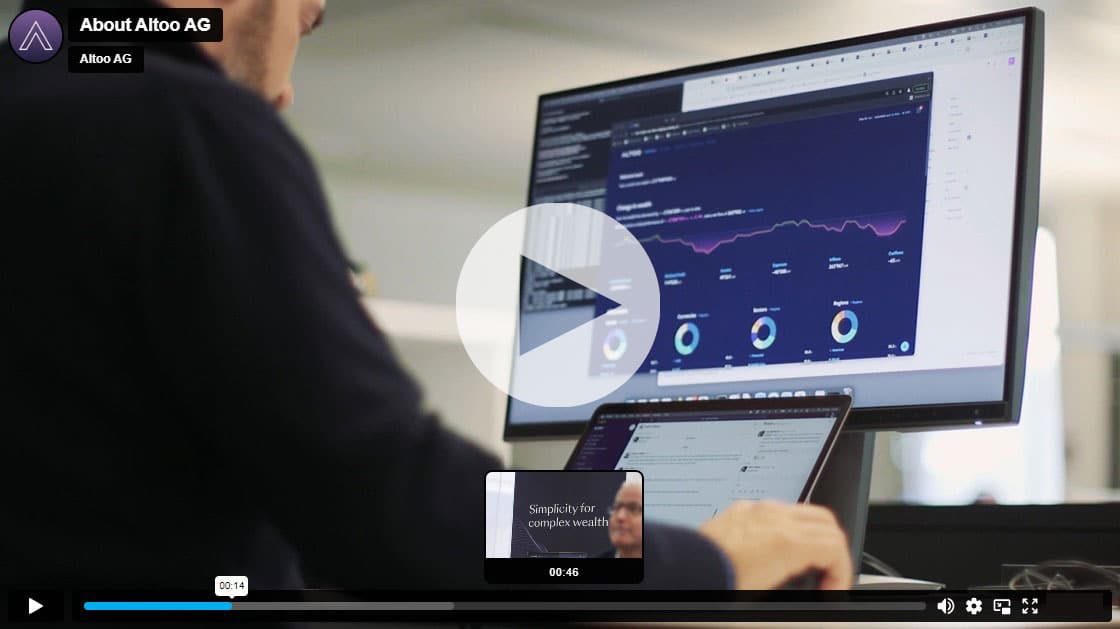Digitalisation is changing client expectations and behaviour and is leading family offices to redesign their business models. But it also requires them to adapt to this new world. If you want to operate successfully in a digital world, you have to consistently tailor your activities to customer expectations and become a data specialist.
Today, wealthy customers and their successors are largely active in a digital world. They are curious and demanding. They are orientated towards digital channels such as Google or Amazon, which have mastered the art of professionally offering small but fine components of the value chain. This means that services in the digital age must be both user-friendly and customised. This is another reason why the family office sector is subject to new requirements. In order to personalise digital touchpoints and provide individual information, competent data administration and data management skills are required. Only if family offices become “data-driven pioneers” can they continue to fulfil the expectations of their families and remain successful in the long term.
Digital dashboard instead of Excel
Digital wealth platforms have become established in portfolio management in order to create organised and ultimately profitable information from unsorted data. If a family office uses Excel spreadsheets for wealth management, the benefits of a digital wealth management platform should be examined, as platforms can simplify complexity. The more different investments are made, the more complex wealth management becomes. It becomes increasingly time-consuming to keep the master spreadsheet up to date and, as with any manual input, the number of data entries required also increases the susceptibility to errors. Not to mention the volatility of the markets, which makes updating the table even more difficult.
With a digital platform, on the other hand, data that was hidden in several Excel spreadsheets can be accessed. With the help of platform intelligence, it is sorted, automatically analysed and presented in structured and clear dashboards. For example, users receive a comprehensive overview of all bankable assets such as shares, bonds and cash as well as non-bankable assets such as private equity investments, property, cars and art. Wealthy private individuals and their advisors can analyse the performance of each individual asset in detail. Profits from share sales, liabilities from private equity investments, past and future dividends, custody fees, transaction costs, property costs and rental income are financial values that can be tracked.
Security as top priority
Wealth management is and remains a business of trust with the highest standards of due diligence and security. And security is usually one of the most important factors when a family office is considering whether to opt for a wealth platform. However, data on a platform based on bank data is likely to be more secure than in a single Excel spreadsheet, which can easily be put out of action, let alone overwritten, deleted or corrupted by an incorrect formula or input.
The human factor remains crucial
Modern digital wealth platforms address important challenges faced by their users by offering data aggregation, detailed analyses and error-free portfolio reports. Platform technology can also provide answers to other individual questions. But only the right interpretation leads to success in the data race. And that still requires human experts.
The human factor therefore remains in demand in wealth management – not despite, but precisely because of increasing digitalisation. The mountains of data are growing rapidly and the necessary analysis methods are available. Human knowledge remains indispensable for drawing the right conclusions. Wealth platforms therefore help with the fast, error-free and secure processing of information and support decision-making.
However, humans often still have the last word when it comes to assessing investment preferences. A new field of cooperation between humans and technology is emerging here, which emphasises that in the age of big and smart data, an individual can do less in portfolio management. Being an expert in everything was yesterday – the interdisciplinary duo of man and machine is today.
This article was originally published in German in the Wir-Magazin. Check the media page regularly to stay up to date on our press work.











